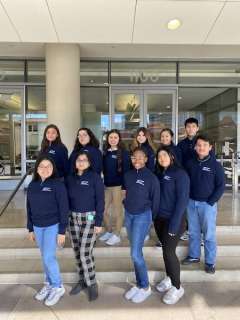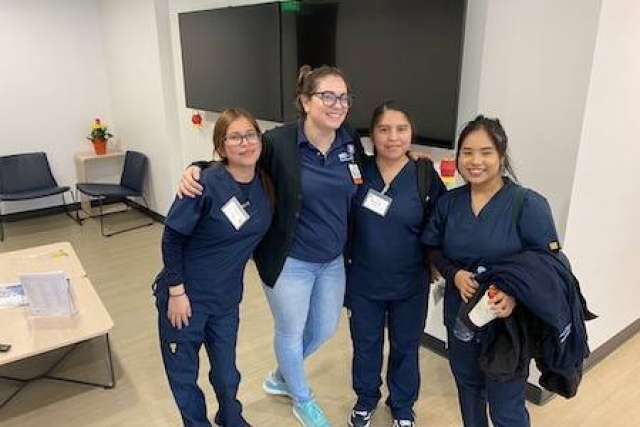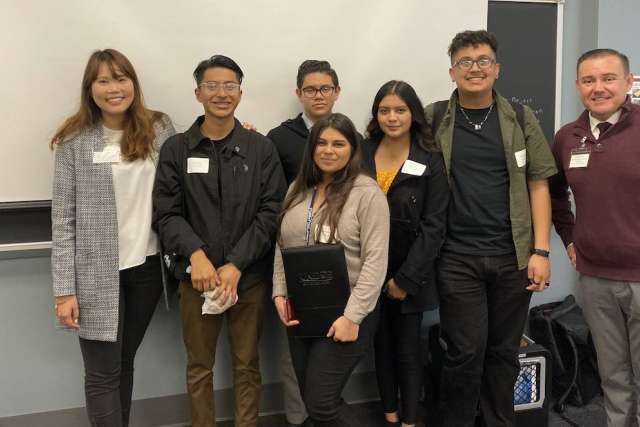“Many people aren't familiar with the fact that you can work at UCLA Health and not be a doctor or a nurse. You can go into financial roles and a variety of administrative, service and clinical roles,” says Robin Epstein Ludewig, senior director, Talent Management at UCLA Health. “Some of these jobs require minimal training, some maybe three to six months and up to two years. There's many career tracks to choose from.”
These jobs fall under the umbrella known in the industry as “allied health.” They account for 60% of the health care workforce and include the fields of nutrition, patient transport, emergency medicine, respiratory therapy, phlebotomy, rehabilitation and many others.
There’s a steadily increasing need for these roles. According to a 2009 report, California would need to train nearly 1 million more allied health professionals by 2030 to meet the projected demand. That’s before taking into account the demand created by the COVID-19 pandemic.
Ludewig says she and Carol Mangione, MD, MSPH, division chief of general internal medicine and faculty adviser of UCLA DGSOM Community Engagement, came together about 12 years ago to address the allied health care shortage in California.
Enter the Allied Healthcare Careers Program, a pipeline initiative created in 2013. It is one of the many community engagement programs at UCLA Health and the David Geffen School of Medicine that provide opportunities for young people to learn about and enter health care fields.
“We want our employees to mirror the community we serve,” says Ludewig. When it comes to full-time staff, “more than 80% of our new (allied health) hires are from the local community.”
Shifting gears
In 2017, the Allied Healthcare Careers Program further evolved when philanthropists Lauren and Robert (Bobby) Turner partnered with UCLA to create a week-long, on-campus internship exploring allied health fields.
Pre-pandemic, the internship included a week-long stay in the UCLA dorms, meals in the dining hall, rotations through various fields such as Child Life, Radiology, Nutrition and Emergency Medical Technicians (EMT), group activities, debrief discussions and individual project time.
High school students across Los Angeles were recruited for this opportunity to shadow entry-level, clinical and administrative positions at UCLA Health. Around 96% of the interns identify as non-white and come from under-served communities in Los Angeles County. That’s critical when it comes to speaking patients’ languages and caring for them with cultural competence, which builds trust and leads to better health outcomes.

“The dorm experience is one of the big perks that some of the students have experienced,” says Community Engagement program coordinator David Rincon. “Many of them are first-generation students who might not be dorming or attending college, and this is often the first time they’re setting foot on a major university campus.”
To continue the program during the COVID-19 pandemic, Gloria Moon, program director of Community Engagement at UCLA David Geffen School of Medicine, shifted the program to a virtual two-day workshop with a series of videos to introduce students to various career opportunities.
“We had about 120 students attend both days, which was awesome considering they had just finished a year and a half of remote learning,” says Rincon of the June workshop.
The first of a series of videos features an animated scenario of a student who visits the ER after being hit by a car while riding his scooter. His journey at the hospital shows students the various encounters that a patient might have with the different health care professionals, many of whom are in allied health.
In the second video, students meet Ermin Cruz, a physical therapy assistant (PTA) at UCLA Health. Cruz takes students through the physical therapy area and shares details of his role and the requirements to become a PTA.
“Our students come from communities where mentorship opportunities in high school are unfortunately very limited,” says Moon. “Professionals share with the students their own journey, and it allows the students to envision themselves in these careers.”
Students are recruited through a number of avenues, including organizations such as Heart of Los Angeles (HOLA), a nonprofit that provides underserved youth with free academic programming, exposure to the arts and athletics.
Alumni of the program also help with recruitment, Moon says. “Students refer their own family and friends.”

She says post-program survey responses from students show that the mentorship and professional development provided keep them invested even after they complete the program.
Students who complete the internship and commit to three workshops are eligible for scholarships toward short-term allied health training. Around 35% of students have received full support for EMT or phlebotomy training and two students have been hired at UCLA Health.
One alumni of the program became an EMT and is saving money to apply to medical school. Another is training to become a therapist.
Of the 139 alumni, 60% have said the internship experience had a direct impact in their decision to choose a health care career.
Community Engagement will begin recruitment for the Summer 2022 internship in January. To learn more or to volunteer, visit Community Engagement.



